Call Monitoring for Quality Assurance and Compliance
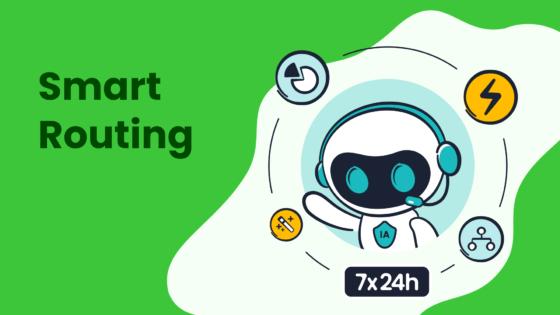
Call monitoring is vital for ensuring compliance and maintaining high-quality standards in call centers. It enables you to identify and address potential issues, enhancing customer satisfaction and operational efficiency. Nearly 95% of call centers use monitoring and coaching to improve service, yet only 17% of agents feel it positively impacts Customer Satisfaction (CSAT). With 80% of service organizations relying on CSAT as a core metric, monitoring becomes indispensable for meeting customer expectations.
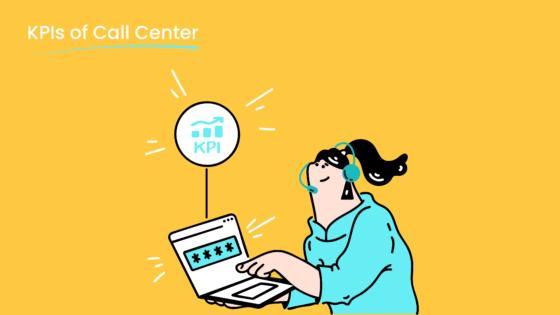
Sobot's advanced call monitoring systems, featured in its Voice/Call Center solutions, provide real-time insights and tools to transform customer interactions. These systems help you streamline operations while fostering trust and compliance.
The Role of Call Monitoring in Call Center Compliance
Understanding Call Center Compliance and Key Regulations
Call center compliance ensures that your operations align with legal and ethical standards. It protects consumer rights, safeguards privacy, and minimizes compliance risks. Various regulations govern call centers, each addressing specific aspects of operations. For example, the HIPAA regulation protects sensitive health information, while the TCPA prevents unwanted commercial communications. Below is a table summarizing key regulations:
| Regulation | Description |
|---|---|
| HIPAA | Protects sensitive health information from disclosure without consent. |
| TCPA | Prevents unwanted commercial communications and sets business guidelines. |
| PCI DSS | Secures payment card information during transactions. |
| TSR | Requires telemarketers to disclose material product/service information. |
| DNC Registry | Protects consumers from unwanted telemarketing calls. |
| FDCPA | Regulates debt collection practices. |
| Call Recording Consent | Governs consent requirements for call recording. |
| Dodd-Frank Act | Promotes transparency in financial institutions. |
| GLBA | Mandates strict protection of customer data in financial services. |
| ECOA | Prevents discrimination in credit transactions. |
| TILA | Ensures clear disclosures about credit terms. |
Understanding these regulations helps you implement a robust compliance policy, reducing the risk of violations and fostering trust.
Legal and Ethical Implications of Non-Compliance
Failing to comply with regulations can lead to severe consequences. Non-compliance often results in legal actions, financial penalties, and reputational damage. For instance, 19% of compliance professionals have faced legal or regulatory action, and breaches involving non-compliance cost $220,000 more on average. The total cost of a breach for non-compliant organizations can reach $5.05 million. Beyond financial losses, non-compliance undermines consumer rights and erodes trust. Ethical lapses, such as mishandling customer data, can alienate your customers and harm your brand's reputation. By prioritizing compliance management, you can avoid these pitfalls and ensure your call center operates ethically and legally.
Building Customer Trust Through Compliance
Compliance plays a critical role in building customer trust. When you adhere to privacy standards like PCI DSS, you protect sensitive data and prevent security breaches. This is crucial, as 78% of customers stop engaging with brands after a data breach. By demonstrating a commitment to compliance, you reassure customers that their information is safe. This fosters loyalty and strengthens your brand's reputation. Sobot's Voice/Call Center solutions, with features like encrypted data transfer and global compliance support, help you maintain high compliance standards. These tools not only protect your business but also enhance customer satisfaction by ensuring secure and transparent interactions.
How Call Monitoring Systems Ensure Compliance
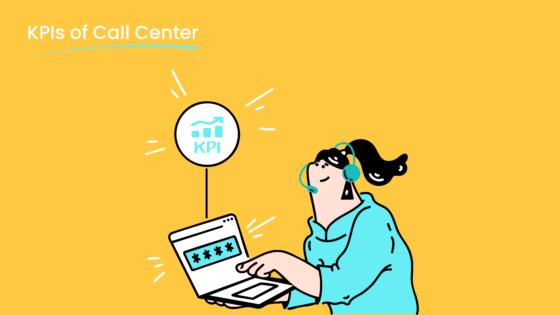
Detecting and Preventing Regulatory Violations
Call monitoring systems play a crucial role in identifying and preventing regulatory violations in your call center. These systems analyze conversations in real time, flagging potential issues such as unauthorized disclosures or non-compliance with consent requirements. For example, regulations like the Telephone Consumer Protection Act (TCPA) require businesses to obtain explicit consent before contacting customers. A robust monitoring system ensures that agents follow these rules, reducing the risk of hefty fines.

Sobot's Voice/Call Center solutions provide advanced tools for compliance monitoring. Features like real-time call tracking and AI-powered voice analytics help you detect irregularities instantly. These tools also allow you to review call recordings and transcripts, ensuring that every interaction aligns with legal and ethical standards. By leveraging such technology, you can safeguard your business from legal risks while maintaining customer trust.
Ensuring Script Adherence and Policy Compliance
Adhering to scripts and policies is essential for maintaining consistent communication standards in your call center. Call monitoring systems evaluate agent performance against predefined metrics, ensuring that every interaction meets your compliance standards. Below is a table highlighting key performance metrics that support script adherence and policy compliance:
| Metric | Description |
|---|---|
| Script Compliance | Ensures agents stick to the pre-approved script for consistent, high-quality interactions. |
| Brand Name Check | Correctly mentioning the brand name reinforces brand identity and builds customer trust. |
| Pronunciation | Speaking clearly helps customers understand better and shows professionalism. |
| Greetings & Salutations | Warm greetings set a friendly tone and make customers feel appreciated. |
| Lead Verification | Accurately checking lead information ensures meaningful future interactions. |
| Interruptions | Minimizing interruptions shows respect for the customer’s time. |
| Confidence, Empathy, & Improvisations | Demonstrating these traits builds rapport and effectively addresses customer needs. |
| Brand-Specific Keywords | Aligns conversation with marketing goals, improving brand recognition. |
| First Call Resolution (FCR) | Measures the percentage of calls resolved on the first contact, indicating efficiency. |
| Average Handling Time (AHT) | Average time taken to handle a call, reflecting operational efficiency. |
| Customer Satisfaction Score (CSAT) | Measures customer satisfaction with the service provided. |

Sobot's call monitoring systems excel in ensuring script adherence. The platform's intelligent IVR and AI-powered voicebot guide agents through conversations, minimizing deviations from approved scripts. These features not only enhance compliance but also improve customer satisfaction by delivering consistent and professional service.
Training Agents for Regulatory Standards
Effective training is the backbone of compliance in any call center. Call monitoring systems provide valuable insights into agent performance, helping you identify areas that require improvement. By analyzing call data, you can tailor training programs to address specific gaps in knowledge or skills.
Sobot's Voice/Call Center solutions support ongoing training by offering detailed analytics and performance reports. These tools enable you to track agent progress and measure the effectiveness of your training initiatives. Recent statistics highlight the success of such programs. For instance, compliance training modules like "Ethics and Code of Conduct: Introduction" achieved a 99.29% completion rate, while security training modules like "Password Game Show Trivia Game" reached 98.30%. Below is a chart showcasing completion percentages for various training programs:
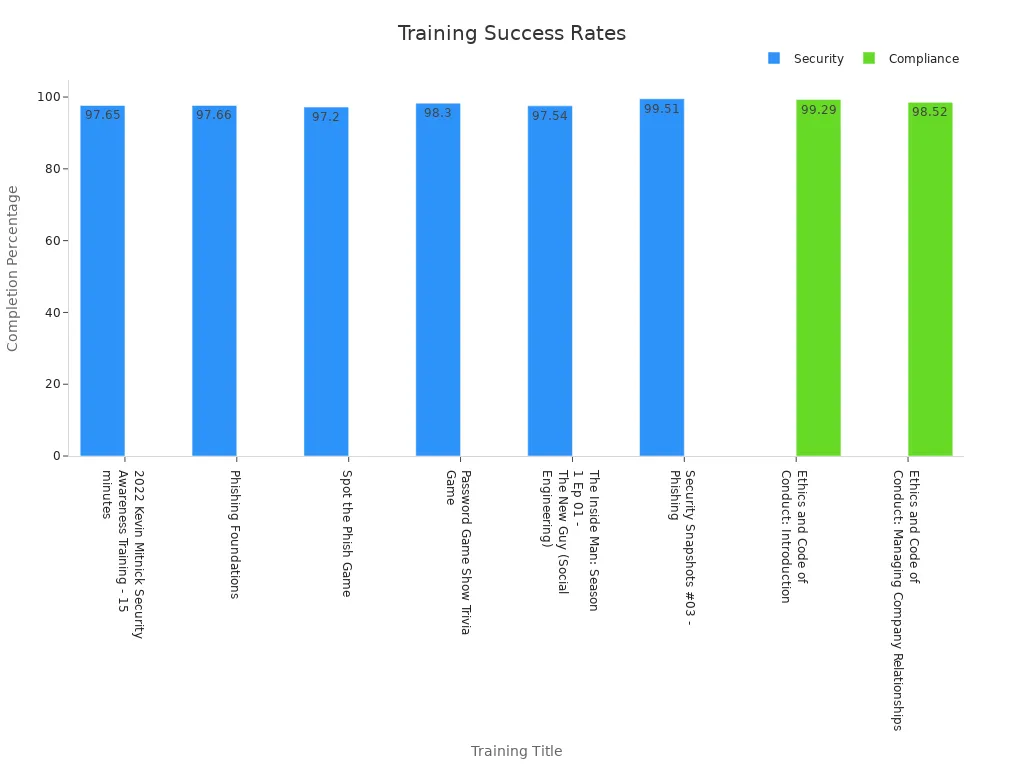
By investing in ongoing training, you ensure that your agents remain well-versed in regulatory standards. This not only reduces the risk of non-compliance but also enhances overall operational efficiency.
Enhancing Quality Assurance with Call Monitoring
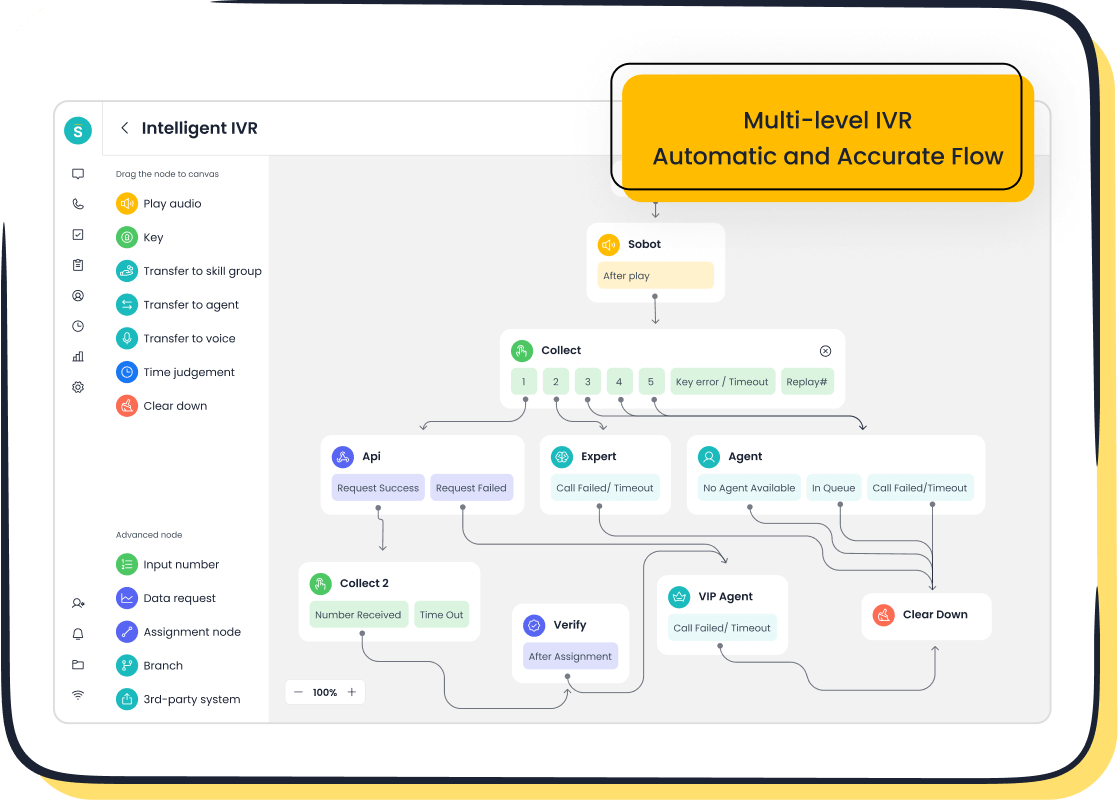
Identifying and Addressing Agent Performance Gaps
Call monitoring systems provide valuable insights into agent performance, helping you identify areas that need improvement. By analyzing metrics like Customer Satisfaction Score (CSAT), Net Promoter Score (NPS), and First Call Resolution (FCR), you can pinpoint specific gaps in service delivery. For example, a low FCR rate often indicates that agents struggle to resolve issues on the first attempt, leading to customer frustration and increased operational costs.
| Metric | Description | Impact on Performance |
|---|---|---|
| Customer Satisfaction Score (CSAT) | Measures customer feedback on their experience. | Identifies areas for service improvement. |
| Net Promoter Score (NPS) | Assesses customer loyalty and likelihood to recommend the business. | Indicates overall customer experience. |
| First Call Resolution (FCR) | Tracks how often issues are resolved on the first contact. | Reduces customer frustration and costs. |
Sobot's Voice/Call Center solutions simplify this process with real-time call tracking and AI-powered analytics. These tools allow you to monitor agent interactions and identify patterns that may hinder performance. For instance, if agents frequently deviate from scripts or fail to address customer concerns effectively, the system flags these issues for review. By addressing these gaps, you can enhance both compliance and quality assurance in your call center.
Maintaining Consistent Communication Standards
Consistency in communication is essential for delivering high-quality service. Call monitoring systems help you maintain these standards by evaluating agent performance against predefined benchmarks. Practices like standardized evaluation forms, regular calibration sessions, and real-time monitoring ensure that every interaction aligns with your quality assurance goals.
| Practice | Contribution to Quality Assurance |
|---|---|
| Standardized evaluation forms | Provides a complete picture of performance |
| Regular calibration sessions | Ensures consistent scoring among evaluators |
| Real-time monitoring | Allows for immediate coaching and feedback |
| Integration of customer feedback | Identifies areas for improvement based on customer input |
When you implement these practices, you create a fair and transparent evaluation process. This not only boosts agent morale but also ensures that customers receive consistent and professional service. Sobot's intelligent IVR and AI-powered voicebot further support this by guiding agents through conversations, reducing errors, and improving script adherence. These features make it easier to uphold communication standards, even during high call volumes.
Leveraging Customer Feedback for Continuous Improvement
Customer feedback is a goldmine for improving your call center operations. Metrics like CSAT, NPS, and Customer Effort Score (CES) provide actionable insights into customer experiences. For example, a high CES score may indicate that customers find it difficult to resolve their issues, signaling a need for process optimization.
| Metric | Description |
|---|---|
| CSAT | Measures customer satisfaction with the service received, enabling targeted improvements. |
| NPS | Indicates overall customer satisfaction and brand advocacy, predicting growth and retention. |
| CES | Assesses the effort required by customers to resolve issues, with lower effort correlating to better experiences. |
Sobot's Voice/Call Center solutions integrate customer feedback directly into performance evaluations. This allows you to identify recurring issues and implement targeted training programs for agents. For instance, if feedback highlights long wait times, you can adjust staffing levels or optimize call routing. By acting on this feedback, you not only improve compliance but also enhance the overall quality of your service.
Tip: Regularly reviewing customer feedback helps you stay ahead of potential issues and adapt to changing customer expectations.
Tools and Strategies for Effective Call Monitoring
AI-Powered Speech Analytics in Call Monitoring
AI-powered speech analytics has revolutionized call center monitoring by providing real-time insights into customer interactions. Traditional methods only allow you to review a small fraction of calls—about 1%–2%. In contrast, AI processes conversations at scale, offering a comprehensive view of performance and sentiment. This technology identifies trends, detects compliance risks, and highlights areas for improvement.
“Instead of manually reviewing a handful of calls, we now have the ability to assess sentiment and topics at scale—something we never could have done before.” – Jim Halloran, Solutions Analyst, Speech Analytics, Inizio Engage
Key benefits of AI-powered speech analytics include:
- Enhancing customer service by identifying common pain points.
- Ensuring compliance in regulated industries.
- Boosting agent performance by flagging high-stress interactions.
Sobot's Voice/Call Center solutions leverage AI to analyze calls in near real-time. This ensures your call center meets compliance standards while improving customer satisfaction. By adopting this technology, you can transform your operations and deliver exceptional service.
Sobot's Voice/Call Center: A Comprehensive Call Monitoring Solution
Sobot's Voice/Call Center offers a robust platform for call center monitoring. It combines advanced features like intelligent IVR, AI-powered voicebots, and real-time analytics to ensure compliance and quality assurance. The platform's ability to track and analyze calls globally makes it ideal for businesses of all sizes.
Here’s how Sobot's solution impacts customer outcomes:
| Metric | Value |
|---|---|
| Reduction in inbound discussion | 20% |
| Increase in positive feedback | 96% |
| Correct answers by AI platform | 80% |
| Customer satisfaction (CSAT) | 97% |
| Problem resolution rate | 85% |
| Customer happiness | 99% |
| Increase in agent efficiency | 30% |
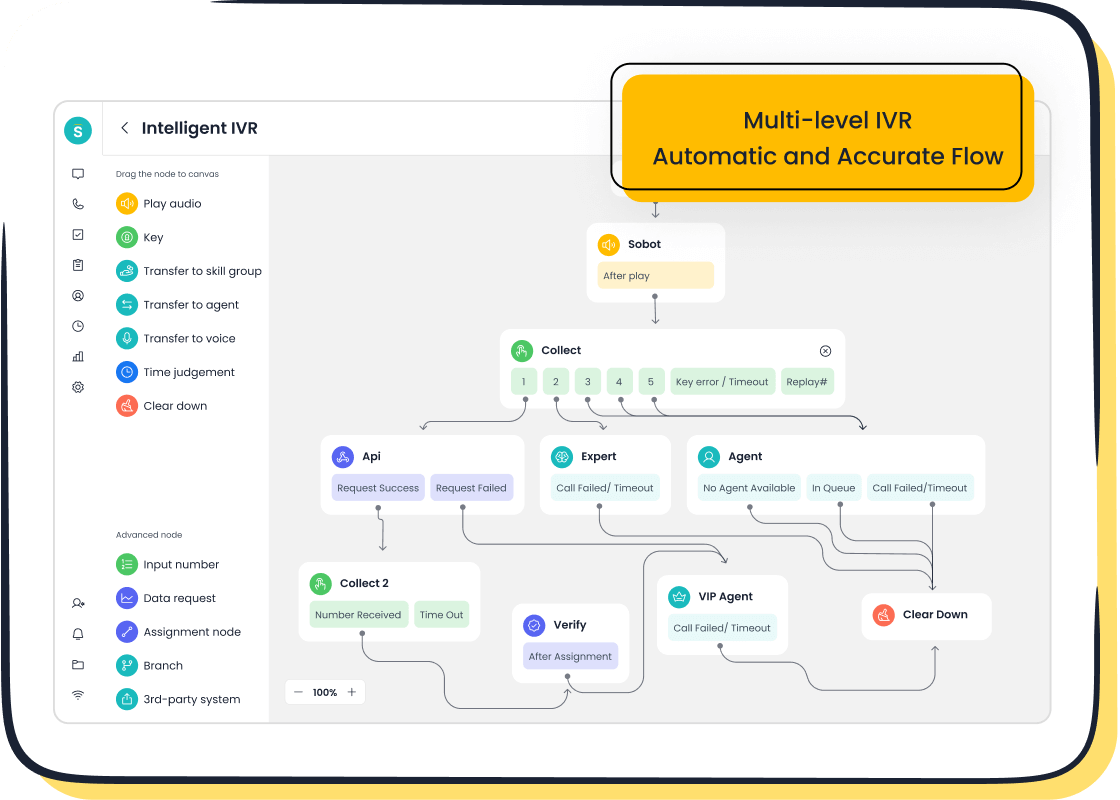

These metrics highlight the platform's ability to enhance compliance, improve agent efficiency, and boost customer satisfaction. With Sobot, you gain a comprehensive tool to elevate your call center operations.
Best Practices for Implementing Call Monitoring Systems
Implementing a call monitoring system requires careful planning. Following best practices ensures you maximize its benefits while maintaining compliance. Start by providing regular training sessions for agents. Structured feedback loops help identify areas needing improvement. For example, training on compliance standards ensures agents understand legal requirements.
| Evidence Type | Description |
|---|---|
| Training and Feedback | Regular training sessions and structured feedback loops are essential for identifying areas needing improvement in call monitoring. |
| Consumer Preferences | 76% of consumers prefer traditional telephone communication for support, indicating the need for alignment with client expectations. |
| Abandonment Rates | The average industry abandonment rate is around 6%, with 34% of clients willing to wait up to 6 minutes before disconnecting, highlighting the importance of effective oversight. |
| Case Study Example | 'Taking a Global Approach' illustrates the necessity of adapting to local preferences and hiring multilingual agents to meet diverse market demands. |
Additionally, align your system with customer preferences. Most customers still prefer telephone communication, so optimizing this channel is crucial. Sobot's Voice/Call Center supports multilingual agents and global compliance, making it easier to adapt to diverse markets. By following these practices, you can implement a system that enhances both compliance and customer satisfaction.
Benefits of Call Monitoring for Businesses
Mitigating Legal Risks and Ensuring Compliance
Call monitoring serves as a critical tool for protecting your business from legal risks. By recording and analyzing interactions, you can ensure that your call center adheres to regulations like the Telephone Consumer Protection Act (TCPA) and Payment Card Industry Data Security Standard (PCI DSS). These systems help you verify that agents obtain proper consent before recording calls or sharing sensitive information. This proactive approach minimizes the risk of fines and lawsuits.
Sobot's Voice/Call Center solutions enhance compliance by offering features like encrypted data transfer and real-time monitoring. These tools ensure that every interaction aligns with legal and ethical standards. For example, if an agent inadvertently violates a compliance rule, the system flags the issue immediately, allowing you to take corrective action. This level of oversight not only protects your business but also fosters trust with your customers.
Improving Customer Satisfaction and Retention
Call monitoring directly impacts customer satisfaction by enabling agents to deliver better service. Real-time monitoring provides instant feedback, helping agents address customer queries more effectively. Proactive guidance ensures that interactions follow best practices, creating a consistent and smooth experience for your customers.
- Real-time monitoring enhances agents' ability to resolve issues promptly.
- Immediate support reduces customer frustration and builds loyalty.
- Proactive assistance ensures service quality remains consistent.
Sobot's AI-powered analytics further improve satisfaction by identifying common pain points and offering actionable insights. For instance, if customers frequently express dissatisfaction with long wait times, you can adjust staffing levels or optimize workflows. These improvements not only enhance satisfaction but also increase retention, as happy customers are more likely to remain loyal to your brand.
Driving Operational Efficiency in Call Centers
Call monitoring systems streamline operations by identifying inefficiencies and optimizing workflows. Metrics like Average Handle Time (AHT) and First Contact Resolution Rate (FCR) provide valuable insights into agent performance and customer interactions.
| KPI | Description |
|---|---|
| Average Handle Time (AHT) | Measures the average duration of customer interactions, helping identify performance and workflow issues. |
| First Contact Resolution Rate (FCR) | Indicates the percentage of issues resolved in the first interaction, enhancing efficiency and reducing costs. |
| Customer Satisfaction (CSAT) | Surveys that gauge customer feelings post-interaction, guiding improvement efforts. |
| Net Promoter Score (NPS) | Measures customer loyalty and likelihood to recommend the company, providing insights into customer advocacy. |
| Customer Lifetime Value (CLV) | Represents the total value a customer brings over their relationship with the company. |
| Customer Effort Score (CES) | Assesses the effort required by customers to resolve issues, impacting loyalty and satisfaction. |
| Agent Turnover Rate | Indicates the rate at which agents leave the company, affecting operational stability and efficiency. |
Sobot's Voice/Call Center solutions leverage these metrics to drive efficiency. Features like intelligent IVR and AI-powered voicebots reduce handling times and improve first-call resolution rates. These tools not only enhance productivity but also lower operational costs, making your call center more effective and scalable.
Call monitoring is essential for maintaining compliance and ensuring high-quality service in call centers. It helps you meet regulatory standards, protect sensitive data, and build customer trust. Advanced tools like Sobot's Voice/Call Center solutions simplify compliance management with features such as real-time monitoring and AI-powered analytics. These tools not only reduce legal risks but also improve customer satisfaction and operational efficiency. By investing in a robust call monitoring system, you take a proactive step toward fostering loyalty and achieving long-term success.
FAQ
What is call monitoring, and why is it important?
Call monitoring involves reviewing and analyzing customer-agent interactions to ensure compliance and quality assurance. It helps you identify performance gaps, improve customer satisfaction, and reduce legal risks. Sobot's Voice/Call Center solutions offer real-time monitoring tools to streamline this process effectively.
How does call monitoring enhance compliance?
Call monitoring systems detect regulatory violations and ensure agents follow scripts and policies. For example, Sobot's AI-powered analytics flag non-compliance issues instantly, helping you take corrective action. This proactive approach minimizes fines and builds customer trust.
Can call monitoring improve agent performance?
Yes, call monitoring identifies areas where agents need improvement. Metrics like First Call Resolution (FCR) and Average Handle Time (AHT) highlight inefficiencies. Sobot's solutions provide actionable insights and training tools to boost agent productivity and service quality.
Is call monitoring suitable for small businesses?
Absolutely! Call monitoring benefits businesses of all sizes. Sobot's Voice/Call Center solutions cater to small businesses with features like batch outbound calling and intelligent IVR. These tools enhance communication efficiency and ensure compliance without requiring large investments.
How does Sobot ensure data security during call monitoring?
Sobot prioritizes data security with encrypted data transfer and GDPR compliance. Its Voice/Call Center solutions safeguard sensitive information while maintaining global compliance standards. This ensures your call center operates securely and ethically.
See Also
Essential Tips for Call Center Quality Assurance Tools
Enhancing Call Center Efficiency Through Effective Monitoring
Top Strategies for Effective Call Center Quality Management